Final Year Thesis
The Peripherals - Peripherals of Affordances
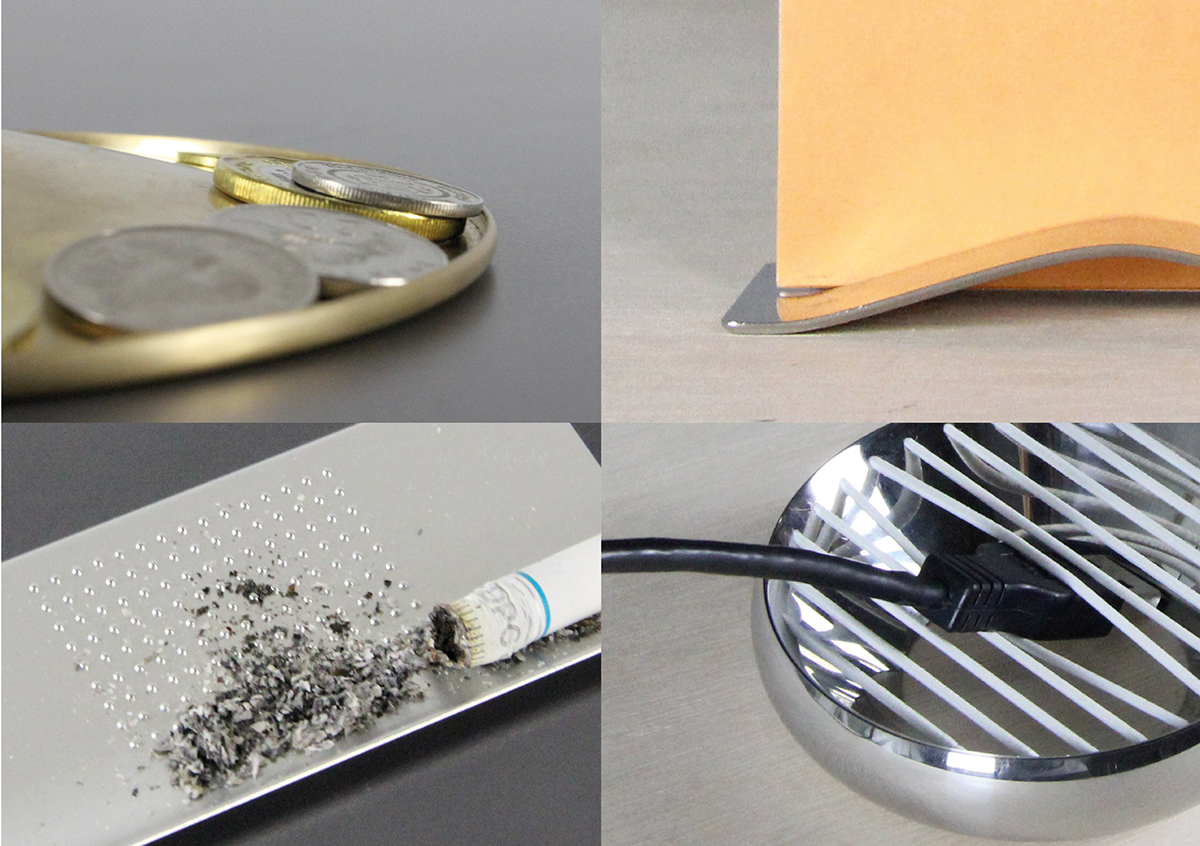
‘Microaffordances’ are small or ignored affordances found on the periphery of objects. The Peripherals are objects that demonstrate the interesting outcome of an experimental approach that attempted in using ‘microaffordances’ as inspirations to the way we design objects, with the aim to break away from the traditional object archetypes, and bring newness to the way we perceive objects around us.
Object Archetypes
Object archetypes condition us to recognise certain shapes for certain purposes. We associate a certain "bowl-likeness" as a vessel object for containing items within. We, in turn, seem to impose much of our learned associations, and apply our memories of archetypes to the objects we make. Thus when it comes to creating a ‘thing’, the common approach is to design the ‘thing’ within the range of an expected, archetypal form. Object archetypes convey function, usability and affordance of a form.
An object for collecting coins would almost always be designed as a vessel with a major concavity, like a bowl, or a plate, or a box or cylinder with an open top. It seems like things around us have a tendency to be expressed within a reasonable likeness to standard archetypes in order. Sometimes these archetypes help us to perceive more clearly the function of the objects, and often we also associate functionality and usability with archetype-likeness.
The notion of affordances highlights to us that secondary functions may arise out of object archetypes intended for a different primary function. One can observe that the ’standard' form of a product may actually influence a person to use it in an unexpected, but very intuitive way. For example, a door knob is perceived to function for opening and closing doors, but it might also frequently be used for holding the clothes hanger.
Breaking Away from Traditional Object Archetypes
One wonders if objects were to be designed by intentionally breaking away from traditional archetypes, but instead, seek to start from the place where other objects ‘unintentionally’ perform the required functions, would this lead to new ways to see what the objects in our world could be?
This thesis seeks to dive into the world of inspiration of secondary, unintended functions, so as to explore inspiration to create novel objects that break archetypical expectations. The investigation wanders into a territory that might be appropriate to be referred to as ‘microaffordances’ - referring to the smaller-scale, almost minute affordances on the periphery of objects, which lead to the intuitive secondary usage of a different nature from the object’s primary intended purpose. The outcome is focused around surprising objects which help perform a momentary, almost subservient function that brings a little convenience to our ‘little needs’, like ensuring that our coins do not run amok all over our desks.
One realised that since ‘microaffordances’ are often rather strange, ignored and overlooked, using ‘microaffordances’ as inspirations to a design approach will bring newness to the outcome, and perhaps break away from the standard perceived object archetypes. It is like giving a form to something that has value.
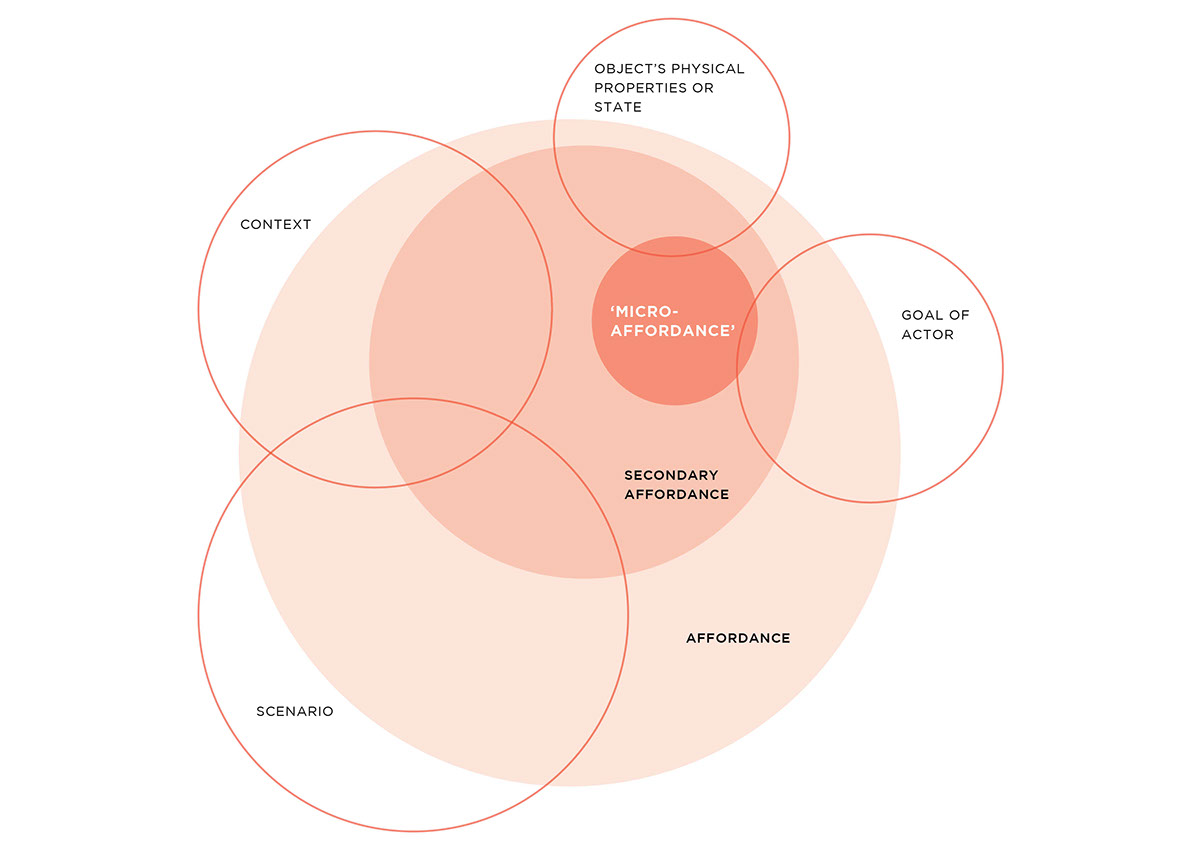
Searching for 'Microaffordances'
Since 'microaffordances' are smalll and often overlooked, I adopted methods that helped in the search for 'microaffordances'.
Side / edge of things

Below things

In-between things

Things above eye-level

On periphery surfaces

Experimental Design Approach

Four observations of 'microaffordances' were chosen and later translated into objects.
Case Study 1
Flange affords containing small objects.
'Microgestures': Placing, Releasing, Throwing, Swiping, Flicking, Picking
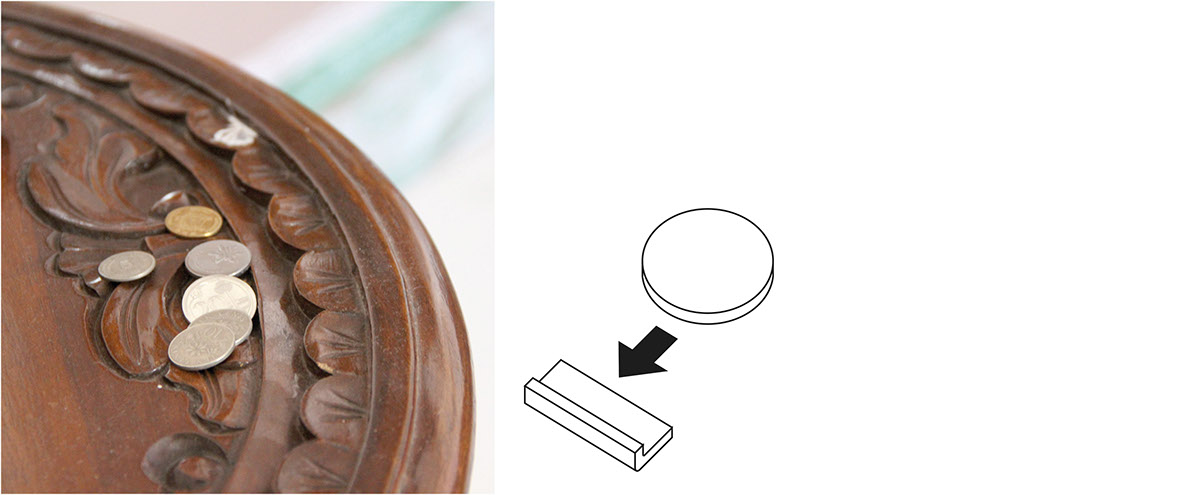
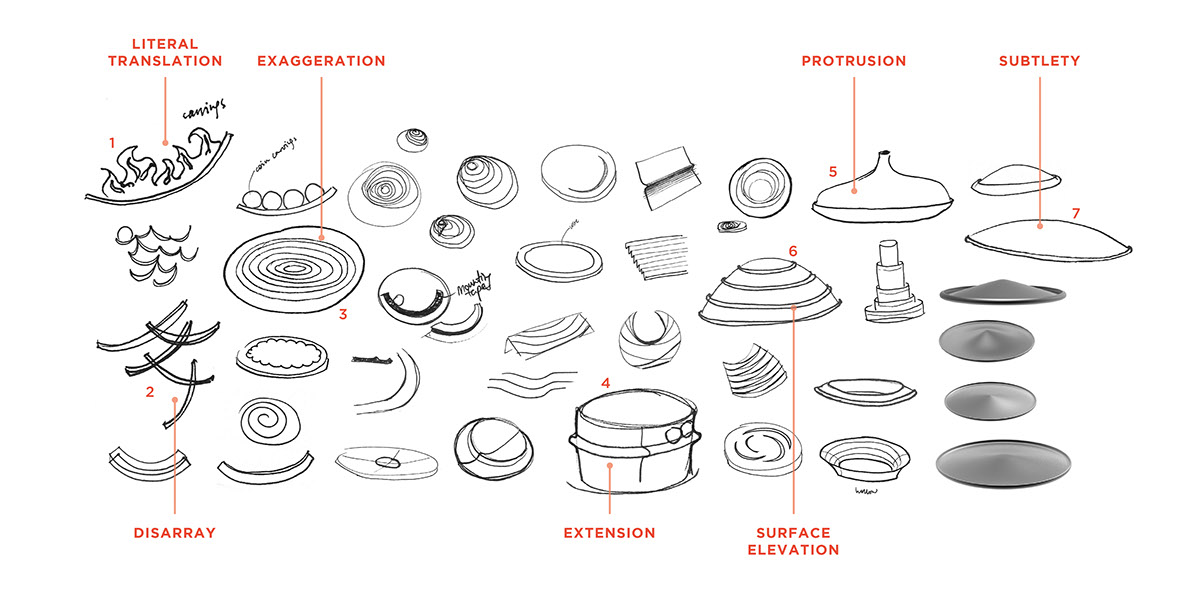
Dish for small objects


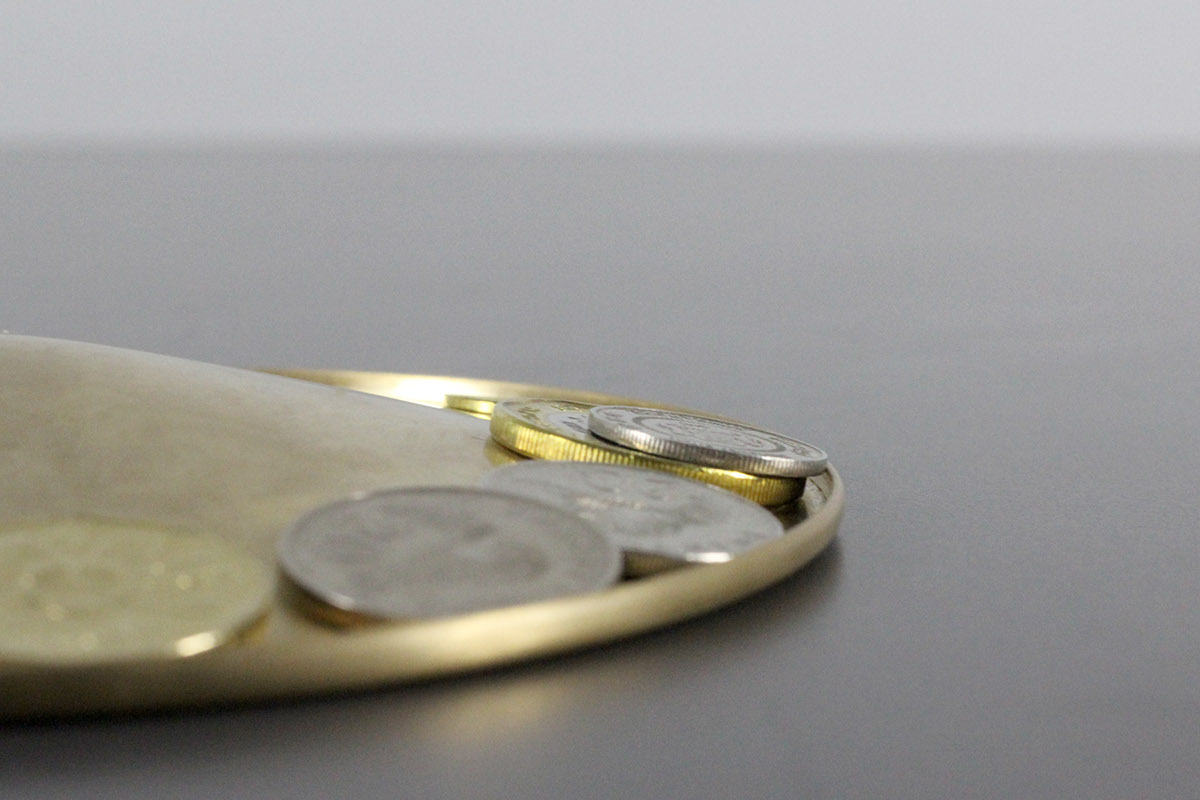
Case Study 2
Surfaces afford holding flat objects between them.
'Microgestures': Sliding, Slotting, Inserting, Pulling

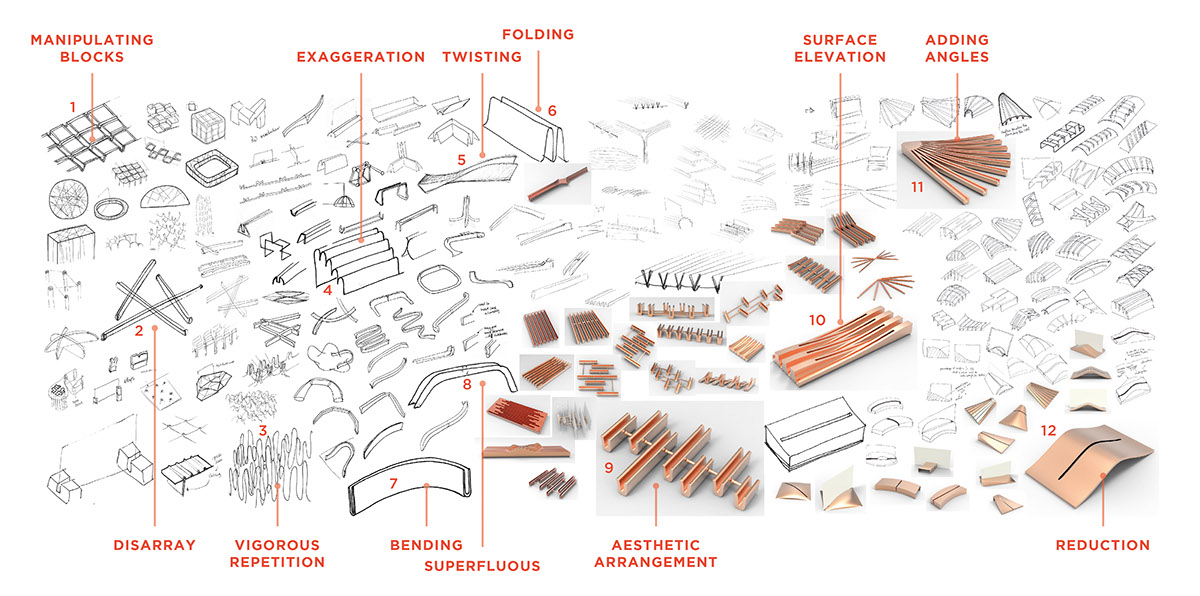
Holder for flat objects


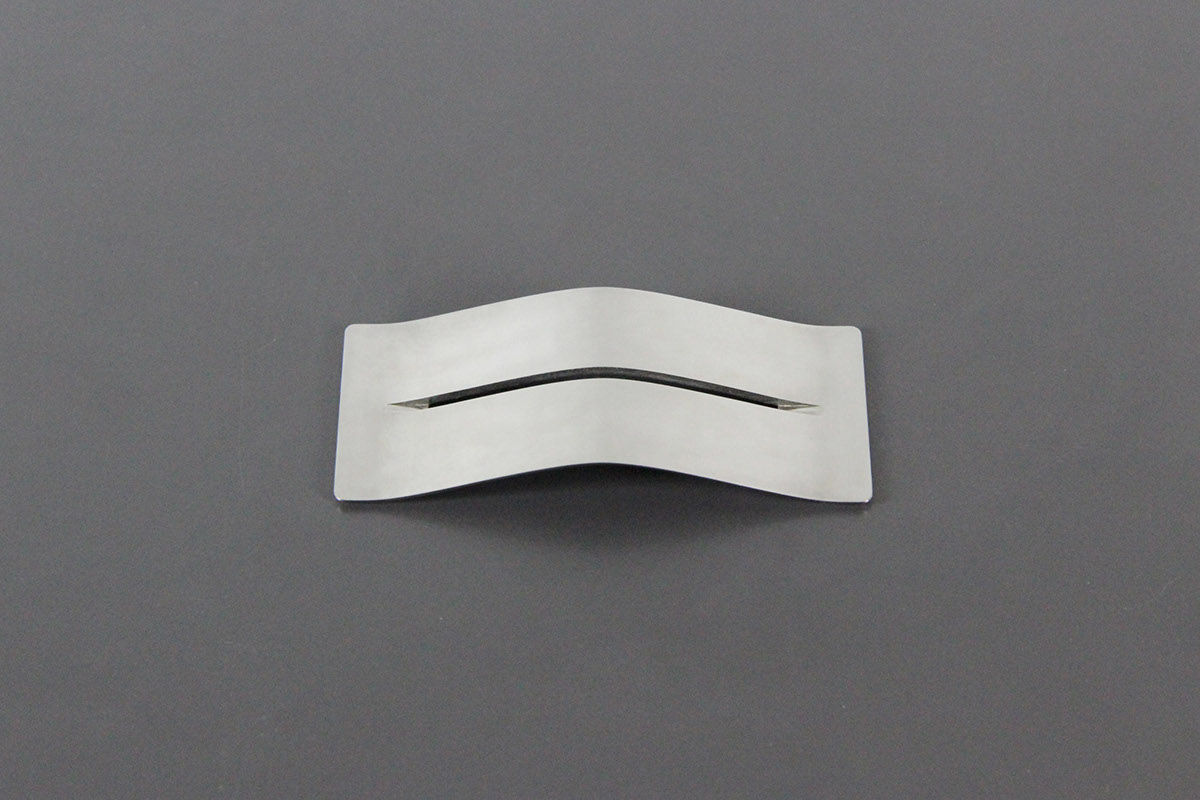
Case Study 3
Rough surface texture affords extinguishing cigarettes.
'Microgestures': Grating, Pressing, Rubbing, Twisting
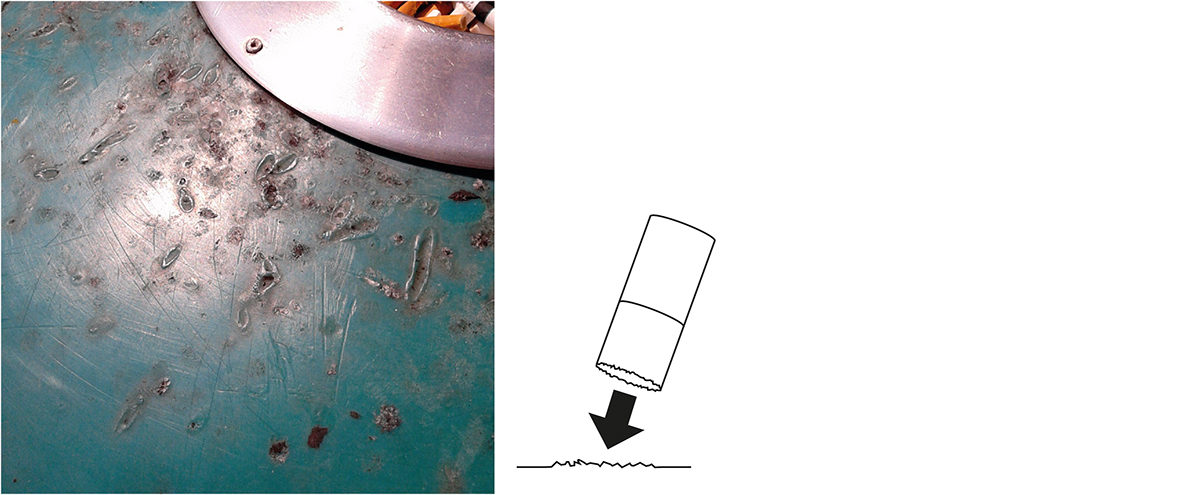

Tray for enhancing experience of extinguishing cigarette
Case Study 4
String-like entities which are in parallel afford restraining head of cord-like objects from slipping off.
'Microgestures': Inserting, Poking, Weaving, Pulling
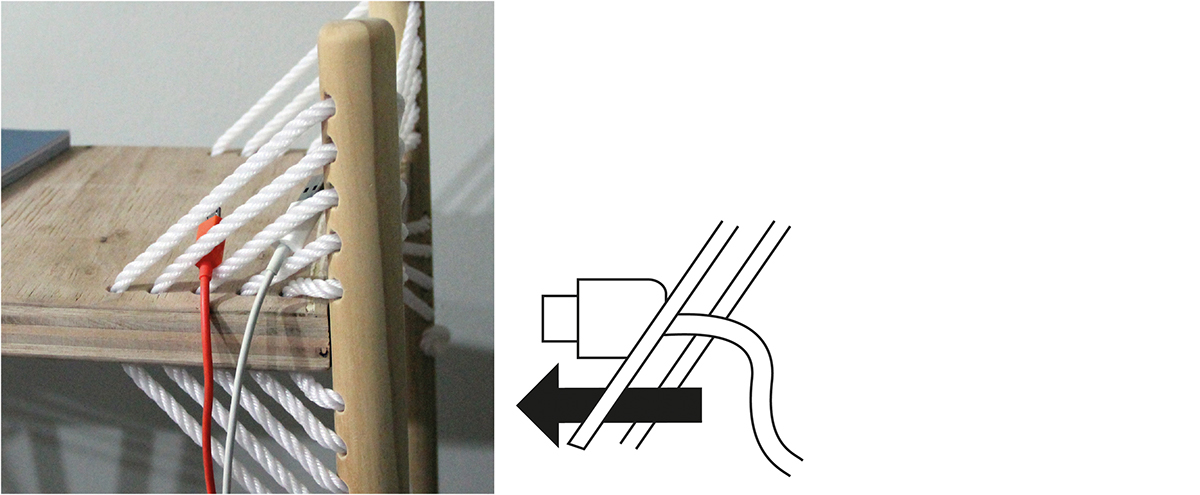

Organiser for USB cords

Peripherals of Affordances
As we dived into the world of objects and ‘microaffordances’, we begin to understand the value of acknowledging moments of redundancy in our daily lives. People tend to overlook the details in daily scenarios that could have been used to spark interesting design potentials. The stumble upon ‘microaffordances’ was a pleasant one that painted the start to achieve intriguing designs that charm people with subtle familiarity and elements of surprise. As one explored further into the experimental approach, the objective and value of the approach grows into clarity. The interesting object archetypes demonstrated by the Peripherals are intended to open the minds of people to the possibilities of how functional things around us can be different and strange, but yet charming and desirable. These strange archetypal forms are not just meant to be used in the contexts which were shown earlier, but also for other contexts that fit these archetypes as subservient functions. For instance, the curvature of the raised circular surface can be used to contain stationery such as a ruler - this helps a person to pick up the ruler easily. However, in order to meet a balance between the factors such as function, aesthetic ,and injecting elements of surprise and newness, the usability of the objects were affected. This is the sacrifice that a designer has to make to achieve an equitable design outcome. Overall, this book has illustrated an approach that brings an outcome that portrays aesthetically pleasing objects that disassociate from common object archetypal forms, which fits in between art and design.
NUS Division of Industrial Design
Final Year Thesis 2014
Guided by Donn Koh
Final Year Thesis 2014
Guided by Donn Koh

